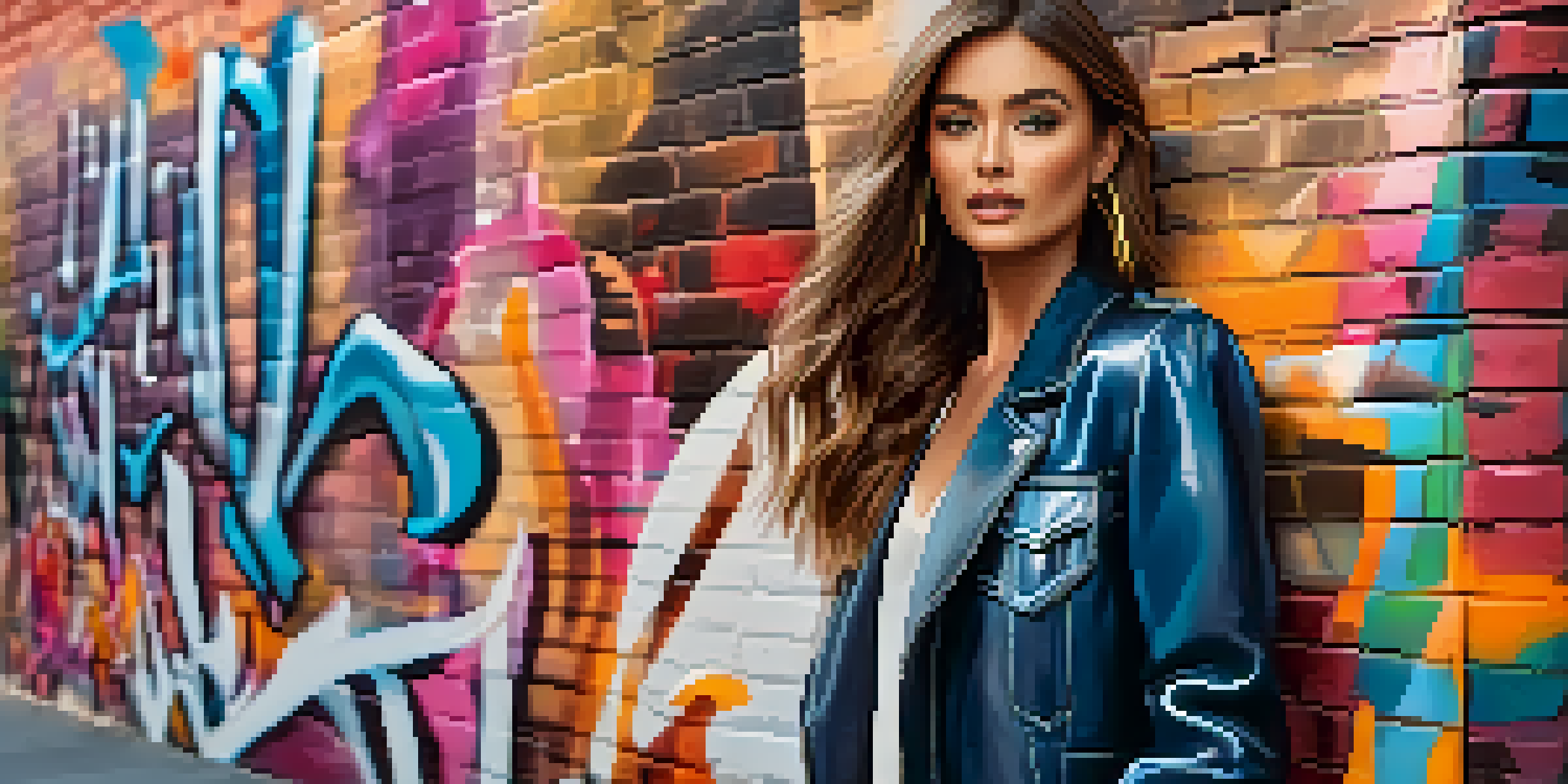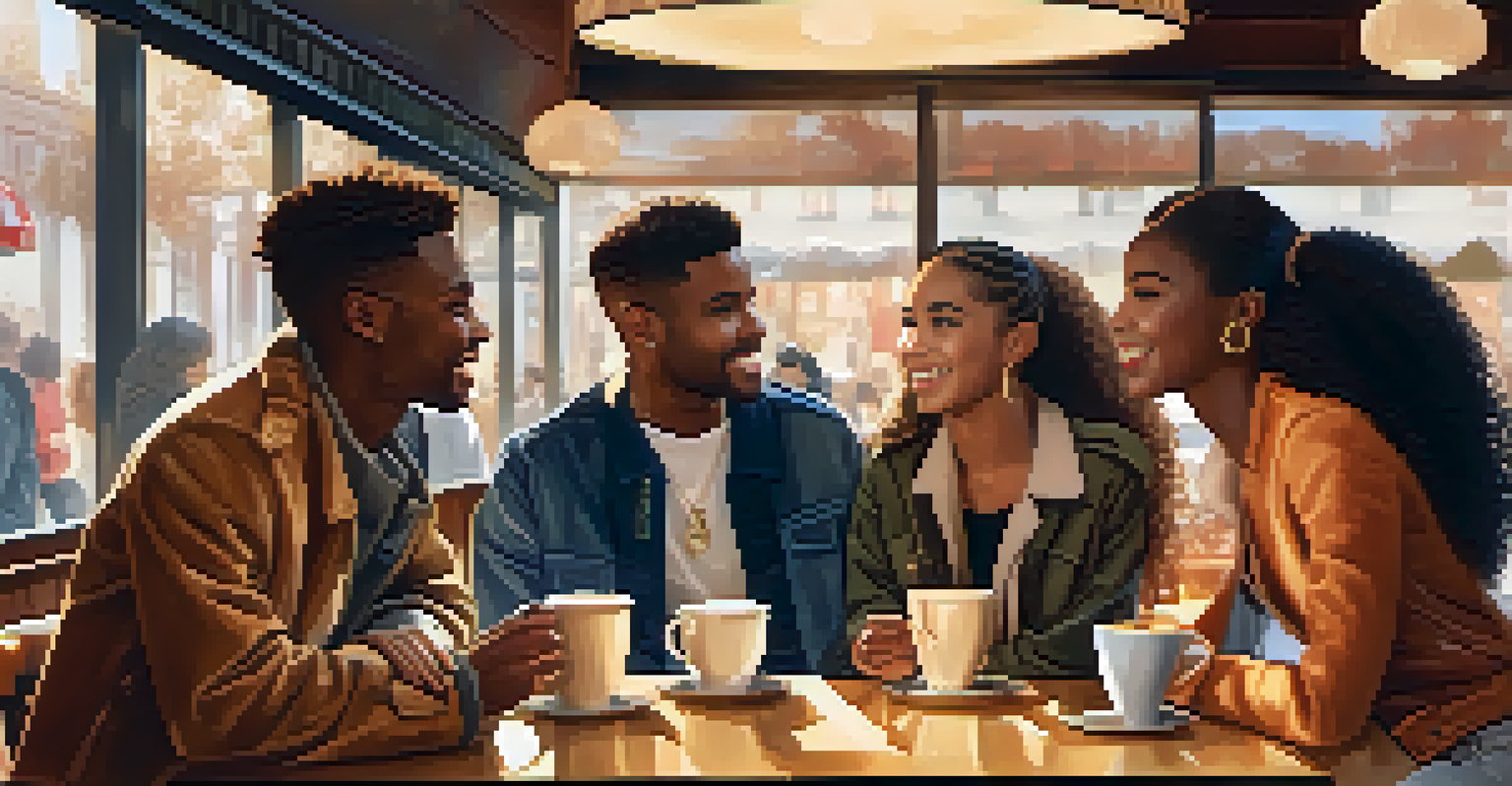How Social Media Shapes Consumer Behavior in Fashion Industry

The Rise of Social Media in Fashion Marketing
In recent years, social media has transformed the way fashion brands market their products. Platforms like Instagram and TikTok have become essential tools for reaching consumers, allowing brands to showcase their latest collections directly to their target audience. This shift means that fashion marketing is no longer confined to traditional advertisements; instead, it thrives on engagement and interaction.
Social media is not just a tool; it's a new way of life for brands and consumers alike.
Influencers play a crucial role in this new landscape. They serve as trusted voices, often shaping trends and driving consumer interest. For example, when a popular influencer shares a brand's outfit, it can lead to a surge in sales, demonstrating the powerful connection between social media presence and consumer behavior.
Moreover, the visual nature of social media aligns perfectly with fashion, where aesthetics are paramount. Brands can use high-quality images and videos to create a strong visual identity, making it easier for consumers to connect emotionally with their products and encouraging them to make purchases.
Building Brand Loyalty Through Social Engagement
Social media allows fashion brands to foster a sense of community and loyalty among their consumers. By engaging with followers through comments, polls, and live streams, brands can create a more personal connection that traditional marketing lacks. This interaction not only makes consumers feel valued but also encourages repeat purchases.

For instance, brands that respond to customer inquiries or showcase user-generated content can enhance their reputation and trustworthiness. When consumers see their peers being acknowledged, it reinforces a sense of belonging, making them more likely to choose that brand over competitors.
Social Media Transforms Fashion Marketing
Fashion brands now leverage social media for direct consumer engagement, moving beyond traditional advertising.
Additionally, exclusive offers and promotions shared on social media can incentivize followers to stay connected. By creating a dynamic and interactive brand presence, businesses can turn casual shoppers into loyal advocates who actively promote the brand within their own networks.
Trends and Trends: The Fast-Paced Nature of Fashion on Social Media
The rapid pace of social media means trends can emerge and fade almost overnight. This speed has created a culture where consumers are constantly looking for the latest styles, often influenced by the content they see online. Platforms like TikTok can make a particular fashion item go viral, leading to a rush of demand that brands must swiftly respond to.
In the world of fashion, social media has become the new runway, where brands showcase their creativity and consumers share their stories.
Fashion brands have adapted by embracing these trends in real-time, often launching limited-edition collections based on viral content. This approach not only keeps the brand relevant but also creates a sense of urgency for consumers, prompting quicker purchasing decisions.
However, this fast fashion cycle can have drawbacks, leading to overconsumption and environmental concerns. As consumers become more aware of these issues, there’s a growing demand for sustainable practices, which brands must navigate while still staying trendy.
User-Generated Content: The Power of Consumer Voices
User-generated content (UGC) has become a cornerstone of social media marketing in fashion. When consumers share their own photos wearing a brand’s products, it acts as authentic endorsements that can significantly influence others’ purchasing decisions. This grassroots marketing is often seen as more trustworthy than traditional ads.
Brands encourage UGC by creating hashtags or challenges that consumers can participate in, fostering a sense of community. When customers see real people enjoying a product, it creates a relatable narrative that resonates more than polished marketing campaigns.
Influencers Drive Trends and Sales
Influencers significantly shape consumer behavior, with their endorsements often leading to increased sales for featured products.
This strategy also allows brands to showcase their products in diverse ways, reflecting different styles and preferences. By embracing UGC, fashion brands not only enhance their credibility but also empower their consumers, making them feel like integral parts of the brand’s story.
The Role of Influencers in Shaping Fashion Trends
Influencers have become pivotal in shaping consumer behavior within the fashion industry. Their recommendations often carry significant weight, with followers looking to them for style inspiration and advice. This influence can create trends that drive entire product lines, making influencer partnerships a strategic priority for many brands.
For example, when a well-known influencer showcases a new outfit, their followers may rush to replicate that look, leading to spikes in sales for the featured items. This phenomenon underscores the direct correlation between influencer activity and consumer purchasing patterns.
However, the rise of influencer marketing also brings challenges, such as ensuring authenticity and transparency. Consumers are becoming increasingly savvy, often seeking genuine connections with influencers who align with their values, making it essential for brands to choose partners wisely.
Social Media and the Rise of Conscious Consumerism
With the growing influence of social media, consumers are becoming more conscious of their purchasing decisions, particularly in the fashion industry. Many shoppers are now prioritizing brands that align with their values, such as sustainability and ethical production. This shift is leading to increased demand for transparency from fashion brands regarding their practices.
Social media serves as a platform for consumers to voice these expectations, holding brands accountable for their sustainability claims. Brands that actively share their efforts towards ethical practices can build trust and appeal to this conscious consumer base.
Conscious Consumerism Gains Momentum
Consumers are increasingly prioritizing brands that demonstrate sustainability and ethical practices, holding them accountable through social media.
As a result, fashion brands are increasingly incorporating sustainability into their marketing strategies, showcasing eco-friendly products and initiatives. This not only meets consumer demand but also positions brands as leaders in the movement towards responsible fashion.
Navigating Challenges in Social Media Marketing for Fashion
While social media offers immense opportunities for fashion brands, it also presents unique challenges that require careful navigation. The fast-paced nature of trends means that brands must be agile and responsive, often needing to pivot their strategies quickly to stay relevant. This can be demanding, particularly for smaller brands with limited resources.
Furthermore, the oversaturation of content on social media can make it difficult for brands to stand out. With countless influencers and brands vying for attention, creating compelling and unique content is essential for capturing consumer interest.

Finally, managing negative feedback or public relations crises in real-time can be daunting. Brands must be prepared to address issues transparently and effectively, reinforcing their commitment to customer satisfaction and brand integrity.